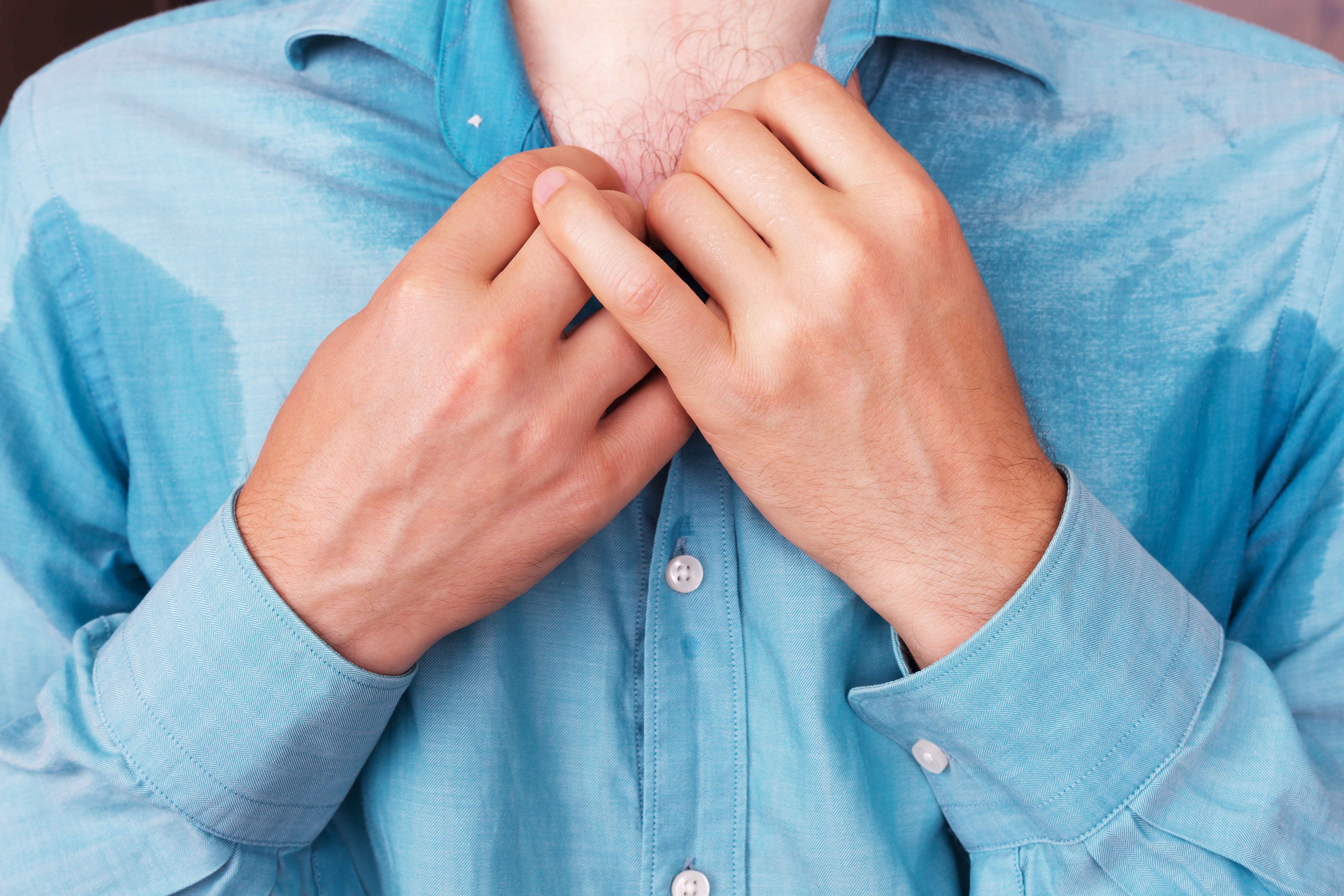- Case-Based Roundtable
- General Dermatology
- Eczema
- Chronic Hand Eczema
- Alopecia
- Aesthetics
- Vitiligo
- COVID-19
- Actinic Keratosis
- Precision Medicine and Biologics
- Rare Disease
- Wound Care
- Rosacea
- Psoriasis
- Psoriatic Arthritis
- Atopic Dermatitis
- Melasma
- NP and PA
- Skin Cancer
- Hidradenitis Suppurativa
- Drug Watch
- Pigmentary Disorders
- Acne
- Pediatric Dermatology
- Practice Management
- Prurigo Nodularis
- Buy-and-Bill
Article
Patients don't talk about hyperhidrosis
Author(s):
Many patients living with hyperhidrosis do so silently, meaning the condition is often left untreated. It's up to dermatologists start the conversation about available treatments when they notice patients’ symptoms, say this expert.
“This is a huge issue that is very underreported. But, identifying it and treating it is a lot of work because patients don’t necessarily talk about it or how it affects their lives,” says Girish (Gilly) Munavalli, M.D., MHS.

Many patients who live with hyperhidrosis - excessive and uncontrolled sweating of the underarms or hands and feet - frequently go untreated. However, several treatment options are available that can reduce the symptoms to provide relief.
According to Girish (Gilly) Munavalli, M.D., MHS, a dermatologist and Mohs surgeon based in Charlotte, N.C., treatments can range from permanent to temporary. He discussed these therapeutic strategies and the importance of introducing them to patients during the American Society of Dermatologic Surgery annual meeting in Chicago on Thursday.
RELATED: A realistic look at hyperhidrosis treatments
“This is a huge issue that is very underreported,” he said. “But, identifying it and treating it is a lot of work because patients don’t necessarily talk about it or how it affects their lives.”
According to research published in a recent American Journal of Managed Care issue, Munavalli said, nearly 3% of Americans specifically live with axillary hyperhidrosis. But, many don’t know it’s a recognized condition for which treatment exists.
“In these patients, their sympathetic nervous system communication with the eccrine sweat glands in the skin is overloaded,” he said. “Their body basically doesn’t know when to stop or regulate their sweating. It’s as if someone in a room is screaming all the time, and he or she doesn’t realize they could just talk normally.”
TREATMENT OPTIONS
Munavalli discussed three treatment options available to patients that can reduce hyperhidrosis permanently or temporarily.
miraDry: Approved by the Food & Drug Administration in 2011, Munavalli said this microwave technology uses thermal energy to kill underarm sweat and odor glands, preventing the nervous system from instigating an abnormal sweat response. Initially, these treatments, similar in process to laser hair removal, have lasted up to two hours. Now, with the MiraFresh protocols released in 2017, they are roughly an hour, and are approximately 80% effective after one treatment. Tumescent anesthesia, also used with liposuction, provides a deeper numbing in this protocol, for patient comfort and added safety factor against underlying nerve damage.
RELATED: Help for hyperhidrosis
After treatments, sweating is typically minimized or normalized to the point where patients can easily control their symptoms with over-the-counter products, such as regular antiperspirants, he added.
Botulinum toxin: Like many other pharmacological agents, botulinum toxin also disrupts the communication between an overactive nervous system and the sweat glands in the underarm. But, it is also frequently used off-label on the hands and feet, he said. It works by blocking the neurotransmitter acetylcholine, impacting nervous system-sweat gland communication. Even though the needles are small, the toxin is administered via multiple injections. Consequently, Munavalli said, it’s important to focus on patient comfort. A topical anesthetic or even ice can be used to numb the area enough to make the procedure tolerable. The toxin effect is temporary, though, and treatments must be repeated every four-to-eight months.
Qbrexza: Approved earlier this year, this local topical agent is basically a towelette that patients use to wipe their underarms nightly before going to bed, Munavalli said. Moistened with a 2.4% glycopyrronium solution, the cloth inhibits the neurotransmitters on the sweat glands, reducing the amount of sweat produced. The product must be used nightly or every other night to maintain the effect, Munavalli said, and the side effect profile is relatively low.
CHALLENGES
In the case of most instances of hyperhidrosis, Munavalli says, the most significant challenge isn’t the condition itself or even identifying the most appropriate treatment. Instead, the largest stumbling block is increasing patient awareness and having and open conversation about symptoms and impact on their quality of life.
“People just live in silence with this disease of hyperhidrosis,” he said. “So, dermatologists should be prepared to bring it up if they notice symptoms. Or, putting up signs or having a brochure available can lead to an open discussion.”
Ultimately, the most vital thing, he added, is for patients to realize that their excessive sweating isn’t simply a livable disease or disorder - it’s a treatable condition.






